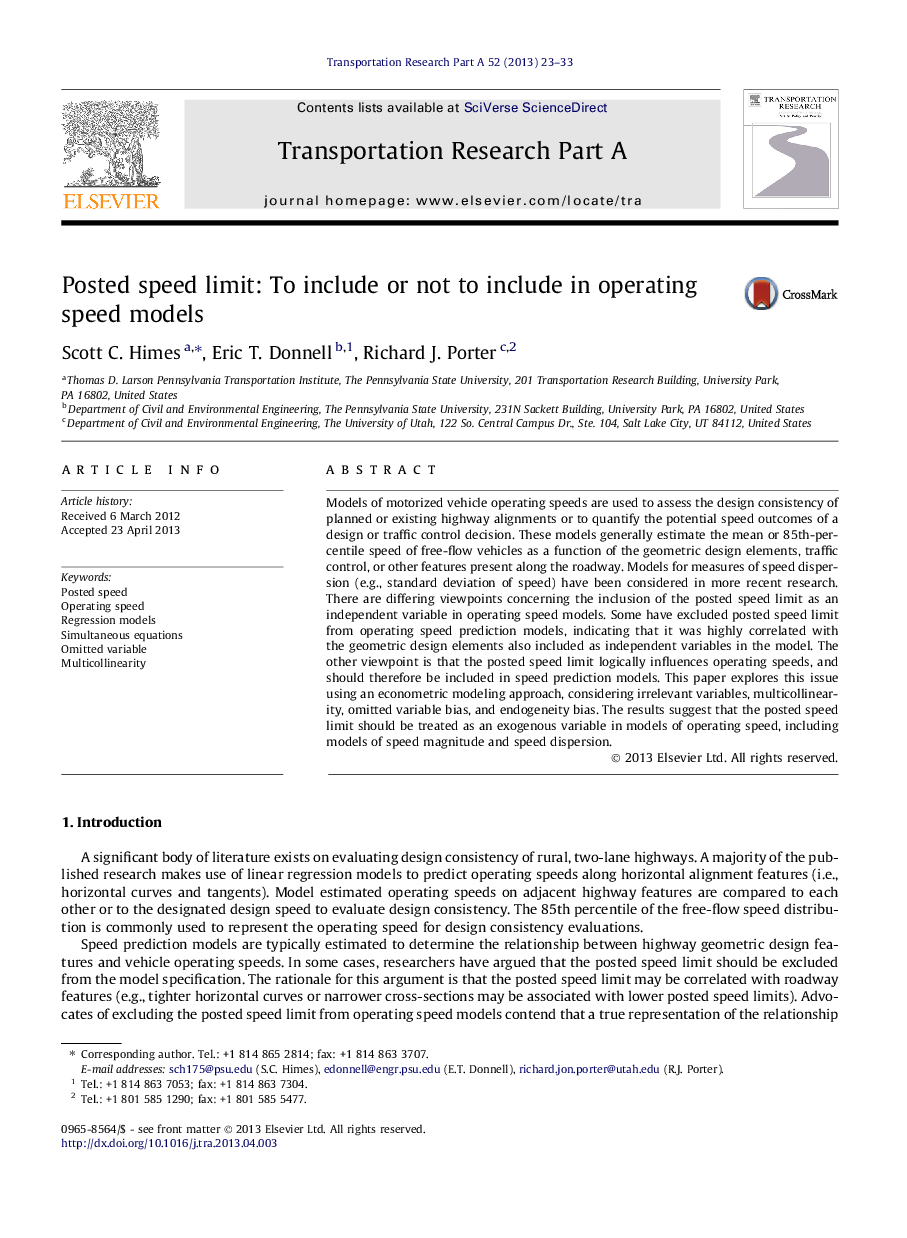| Article ID | Journal | Published Year | Pages | File Type |
|---|---|---|---|---|
| 310450 | Transportation Research Part A: Policy and Practice | 2013 | 11 Pages |
•Incorporate the posted speed limit into models of operating speed.•Focus on estimating the speed distribution instead of estimating a single speed value.•Consider the posted speed limit as an exogenous variable.•Use disaggregate data to minimize the amount of information lost due to aggregation.•Consider the effect of collecting data at more than one location along a road segment.
Models of motorized vehicle operating speeds are used to assess the design consistency of planned or existing highway alignments or to quantify the potential speed outcomes of a design or traffic control decision. These models generally estimate the mean or 85th-percentile speed of free-flow vehicles as a function of the geometric design elements, traffic control, or other features present along the roadway. Models for measures of speed dispersion (e.g., standard deviation of speed) have been considered in more recent research. There are differing viewpoints concerning the inclusion of the posted speed limit as an independent variable in operating speed models. Some have excluded posted speed limit from operating speed prediction models, indicating that it was highly correlated with the geometric design elements also included as independent variables in the model. The other viewpoint is that the posted speed limit logically influences operating speeds, and should therefore be included in speed prediction models. This paper explores this issue using an econometric modeling approach, considering irrelevant variables, multicollinearity, omitted variable bias, and endogeneity bias. The results suggest that the posted speed limit should be treated as an exogenous variable in models of operating speed, including models of speed magnitude and speed dispersion.
